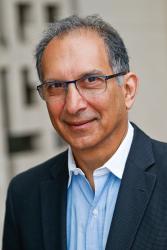INTRODUCTION
In recent economic literature, the middle class has gained an important role in explaining comparative development. While some authors emphasize the economic channel linking the size of the middle class to consumption and growth, others focus on importance of values typically associated with this socioeconomic group, such as democratic attitudes, entrepreneurship, hard work and the importance of education. These values, it is often argued, are crucial for the development process.
Easterly (2001) encapsulates the concept by pointing that societies that have large middle classes are more consensual, which in turn results in higher provision of public goods. In societies lacking a significant middle class, elites under-invest in human and infrastructure capital, which is sub-optimal from the point of view of long run economic growth. Some of these ideas are reminiscent of the literature on the consequences of inequality, such as the work of Gailor and Zeira (1993), on human capital accumulation when credit markets are imperfect. Other contributions to the literature focus on the relationship between the middle class and household consumption. Schor (1999) has argued that what ultimately defines the middle class is an increasing desire for consumption, or “consumerism,” that drives the demand for higher quality goods. A recent report by Nomura International (2009) finds that a S-curve relationship between per capita consumption (of “almost anything”) and GDP per capita in PPP terms has its steepest points at around annual GDP per capita $6,000 (daily GDP per capita $16). Above this level, the income elasticity for items like consumer durables as well as for services like insurance rises well above one, and credit growth accelerates sharply. This remains the case until income levels surpass $25,000 (daily GDP per capita $69). As we explain below, the GDP per capita thresholds ($6,000-$25,000) in which the elasticity of demand is higher than one overlap with our definition of the global middle class.





